If 2020 started a global conversation about mental health, in 2021 we are still talking.
There are discussions of languishing, widespread burnout, and a youth mental health crisis. While researchers are still trying to investigate the exact toll that COVID-19 has taken on us, we’re also looking to the future at what kind of world we want to live in. What needs to change about the way we work and teach, about our lifestyles and our policies, about the way we care for and support each other?
From the individual to the global, this year’s top insights look at how we can cultivate well-being on many different levels, from a few simple ways to feel better, to insights on connecting across our differences and promoting sustainability. They also offer some hints at what has helped us be resilient during the pandemic.
The final insights were selected by experts on our staff, after soliciting nominations from our network of around 350 researchers. We hope they help us all continue the conversation about building a connected, compassionate world.
Feeling uncertain makes us savor the small things in life

For the first 22 months of the pandemic, our lives have been full of uncertainty—about safe behaviors, school openings, vaccination timelines, the job market, and more.
Uncertainty is stressful, of course, and research suggests it may harm our health and make us more insular. But a study published this year in Emotion has uncovered a surprising upside to feeling uncertain: It might drive us to appreciate the little things in life.
In one experiment, researchers handed out flyers to pedestrians that said “Life is unpredictable: Stop and smell the roses” or “Life is constant: Stop and smell the roses.” A short distance away was a table with a dozen red roses on it—and the people who read that life is unpredictable literally smelled the roses 2.5 times more often than the others.
The researchers found that this effect translates to everyday life. They pinged 6,000 participants up to a dozen times a day, asking how chaotic and unpredictable the world felt and whether they were savoring the present. It turned out that when the world felt messy, people were more likely to be savoring their lives a few hours later, at the next ping.
Why? Savoring and appreciating the small things in life may be a coping response that our minds activate when we feel overwhelmed by the ambiguity of it all. Savoring pulls us out of fears and worries about a fuzzy future and into the clear, pleasurable sensations of right now.
“If the world is uncertain, it makes sense to take advantage of what you have now because it may not exist shortly,” explains lead author Andrew L. Gregory. We can even deliberately practice savoring when life feels unsettling by sharing good news or gratitude with others, or tuning into enjoyable sights, sounds, and smells.
Savoring isn’t the only potential upside to feeling uncertain. For people who are less well off, confronting a chaotic environment can actually drive them to prioritize community. In these ways and perhaps others, our brains try to protect us from the unpleasant but unavoidable incertitudes of life.
Not all mind-wandering is good for you, but daydreaming might be

All of us let our minds wander at times. But should we try to be less distracted? Past research has suggested mind-wandering makes us unhappier, unhealthier, and even less caring. But recent studies point to some benefits from mind-wandering—or, more specifically, daydreaming.
In a study published in the Proceedings of the National Academy of Sciences, the University of Calgary’s Julia Kam and her colleagues had people perform mundane, repetitive tasks, interrupting them occasionally to see what they were thinking, all while monitoring their brain activity.
They found people’s minds wandered a lot—sometimes in “constrained” ways (focused on something particular, but not the task at hand) and sometimes in “freely moving” ways (with thoughts skipping around in no particular order)—with signature brain wave patterns for each. In other words, there was a clear difference in the brain between distracted mind-wandering and more free-flowing daydreaming.
Interestingly, daydreaming increased alpha waves in the brain’s frontal cortex, a pattern associated with divergent thinking or thinking “outside the box.” Perhaps that’s why past studies have found a connection between mind-wandering and creativity.
In another study in Emotion, the University of New Hampshire’s Caitlin Mills and her colleagues pinged people via cell phone over several days to report how they were feeling (positive or negative) and if their thoughts were off task (not focused on what they were doing) and freely moving or not. Analyses showed that, in general, if people’s minds wandered off task, they felt worse. But, when those off-task thoughts were freely moving, they felt better—both in the moment and later on.
This suggests daydreaming can be good for us, and we don’t have to be 100% focused all the time. So, if you want to be more creative and happier, don’t feel guilty about doing a little daydreaming.
Vulnerable conversations can bring friends closer together
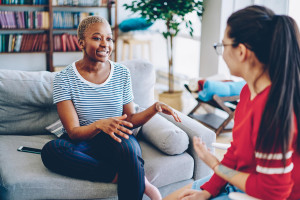
These days, getting people in different groups to listen, understand each other, and cooperate can feel like an insurmountable task.
But two studies this year point to a way forward: through friendship.
In one study in the Journal of Research on Adolescence, researchers invited middle schoolers to participate in the classic 36 questions exercise, designed to help people bond. For 30 minutes a month, pairs of kids took turns answering questions like “What is the hardest part of middle school?” or “What is your proudest moment?” Initially, the pairs didn’t know each other well and weren’t friends.
By the end, the students felt much closer to their partners and considered them more of a friend. This was true even though they only spent 90 minutes together over three months. And it worked equally well for students paired up with someone of the same race or a different race.
This study is one of the first to look at how to build cross-group friendships in middle school, and it offers an easy, practical activity that can help kids connect with people different from them, which may reduce prejudice.
“Providing opportunities for youth to make high-quality cross-ethnic friends could help improve intergroup attitudes and the school racial climate,” write coauthors Leslie Echols and Jerreed Ivanich.
Another study, published in the Journal of Personality and Social Psychology, also found that friendship can be an important avenue for bridging differences.
The researchers asked Black and white adults to imagine having conversations about race with a friend of the other race. Although most reported that these conversations could be risky and uncomfortable, they also saw benefits to them, like learning about a different group’s experiences, understanding each other better, and becoming closer friends. Black adults wanted to be understood by their white friends, and white adults expected to be more comfortable and learn more from these conversations if they happened with a friend.
Both of these studies suggest that, while they may require some vulnerability and discomfort, the deep and difficult conversations we have with our friends could have ripple effects in our polarized world.
We face about nine opportunities for empathy every day
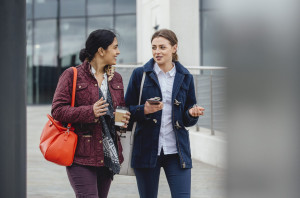
Practicing empathy helps build stronger relationships and a more compassionate society. That’s why researchers study it in lab and field experiments to find out what encourages more of it.
But little is known about everyday empathy—how we use it in our daily lives. A new study published in Psychological Science aimed to correct that.
The University of Toronto’s Gregory Depow and his colleagues recruited 247 people and, several times a day for a week, pinged them to ask if they’d recently had an empathy opportunity (someone expressing emotion in their presence), received or offered empathy, or performed a kind, helpful act. They also recorded whether they resonated with the person’s feelings, took their perspective, or felt compassion for them (all elements of empathy). Then, they reported on their well-being.
The results showed that people had about nine opportunities to empathize (and six opportunities to receive empathy) daily, and they empathized or received empathy about 88% of the time. They also tended to empathize more with close others than with strangers and to empathize more with positive than negative emotions—a surprise to Depow, as researchers often study empathy as a response to suffering.
More importantly, people who saw more empathy opportunities and empathized more were happier and had greater well-being. They also helped out others more after feeling empathy, even if they’d empathized with positive rather than negative feelings.
This suggests that our daily lives are filled with opportunities to practice empathy, including opportunities to share in other people’s happy moments, if we just look out for them.
Compassion and empathy can make us more resilient in the pandemic

At the beginning of the COVID-19 pandemic, gun sales skyrocketed and some people hoarded items like toilet paper. These behaviors assumed that we would enter a situation of scarcity, where we might have to defend what we have against others.
That sounds logical if you assume that people are inherently selfish and competitive. But what if they’re not? And what if seeing and helping other people were actually better for you as an individual in the long run?
During the past year, a new wave of studies suggests that empathy and compassion might have done more to help us get through hard times than buying a gun.
For example, University of Coimbra psychologist Marcela Matos and her team asked more than 4,000 people from 21 countries to describe their beliefs about compassion, as well as their psychological state. In a pandemic, we might avoid compassion because we think it will be too emotionally overwhelming, or because we think certain people don’t deserve compassion.
The researchers found that participants who expressed a fear of showing compassion for themselves or others were likely to feel more depressed, anxious, and stressed out during the pandemic. Compassion fears also seemed to magnify the danger people felt from COVID-19: While the threat of the virus brought on some psychological distress, this distress was worse in those who feared showing or receiving compassion. Rather than protecting their mental health, their inclination to avoid compassion seemed to make them feel worse.
These results complement many other studies from the past year. One published in American Psychologist found that people with more social support tended to be more resilient, consistent with a great deal of research. And “empathy for those most vulnerable to the virus”—as well as a belief in herd immunity through vaccination—also seemed to drive people to get vaccinated and protect themselves and their communities.
All in all, these findings point to the idea that, while we might have the urge to withdraw in a crisis, staying open to others and caring for their well-being can help us weather the storm.
Turning off your camera could reduce Zoom fatigue

When the pandemic hit, many workers went online. That meant videoconferencing for meetings, on top of meeting through a screen with our therapists, our children’s teachers, and friends and family.
Pretty soon, researchers began documenting the mental health toll of this necessary shift. Women, suggests one of those studies, suffer from “Zoom fatigue” more than men, but everyone seemed susceptible to symptoms like depression, anxiety, and excessive tiredness after too many hours on video.
Why? Scientists are still figuring that out, but so far five mechanisms seem responsible: coworkers feeding off each other’s anxiety, feeling physically trapped, intense gaze from a grid of staring faces, the “cognitive load from producing and interpreting nonverbal cues,” and needing to resist the distractions streaming through the screen: texts, emails, social media notifications, and more.
Identifying the problems, in this case, does suggest some solutions. In addition to us taking small steps like shutting off notifications, bringing our laptop outside if we can, or just standing at a desk instead of sitting, managers should think twice before scheduling a meeting and refrain from putting them back to back, while colleagues should strive to keep comments short and to the point.
But the main problem, it seems, is the camera. It’s not just constantly being looked at; it’s also that you can see yourself. “In the real world, if somebody was following you around with a mirror constantly—so that while you were talking to people, making decisions, giving feedback, getting feedback—you were seeing yourself in a mirror, that would just be crazy,” says Stanford University communication professor Jeremy Bailenson.
The solution is pretty simple: Turn off the cameras, both ways, at least from time to time. A study published by the Journal of Applied Psychology in August put that technique to the test with 103 employees—and it did indeed seem to help reduce Zoom fatigue.
While these are not the most world-shaking findings, Zoom fatigue is one of many factors that hurt our well-being during the pandemic. The good news is that we can adapt to the conditions imposed by videoconferencing.
Intellectual humility might help stop COVID-19 misinformation
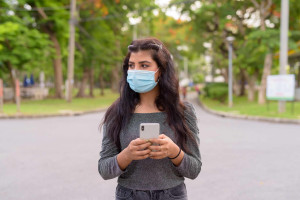
COVID-19 misinformation has contributed to rates of illness and death in the United States that are far higher than they should be, as people refuse to wear masks or get vaccinated. Who tends to believe in fake or misleading news about COVID-19?
Demographic factors like age and education play a role; so does political affiliation. But there is one more factor that is gaining attention from researchers: intellectual humility.
Intellectual humility is simply the awareness that you could be wrong, because of biases created by your emotions, experiences, or education. In a series of studies recently published in Social Psychological and Personality Science, researchers presented a total of 1,300 participants with fabricated headlines about COVID-19 that were ostensibly from news articles (e.g., “Sipping water every 15 minutes prevents a coronavirus infection,” “Coronavirus cases keep rising; Social distancing is not working”).
The researchers found that people higher in intellectual humility were more likely to say they would try to find out if the headline were true by, for example, fact-checking the claims, learning more about the source, and even just reading the entire article. They were also more likely to actually open a new tab in their internet browser to “learn more about this article.”
In another study, researchers at Texas A&M University found that people higher in intellectual humility had more positive attitudes toward the COVID-19 vaccine and were more likely to say they intended to get the vaccine. Importantly, this was true even when accounting for the effect of factors like education and political orientation.
That might be good news: There’s not much we can do about people’s education or politics as the pandemic rages on—but we can act now to help each other cultivate intellectual humility when learning about COVID-19.
Art can be a tool for emotional, social, and political change

Can novels, plays, poems, or movies help you to put yourself into the shoes of another person? Many studies have suggested that could be the case—and in 2021, that case got a lot stronger.
In a paper published in July, Steve Rathje and his colleagues randomly assigned almost 2,000 audience members to complete surveys before and after seeing one of three theatrical productions that involved issues of economic and social inequality. The surveys aimed to measure empathy and prosocial behavior (that is, actions intended to help other people), as well as attitudes toward social issues like racial discrimination, income inequality, and affirmative action.
The results: After seeing the plays, audience members reported feeling more empathy for the groups of people depicted in the plays, and they even changed their attitudes about the political issues raised by the productions. More than that, though, the plays actually changed behavior: After seeing them, people were more likely to donate money to charity.
But the study’s most scientifically important finding might be that the behavioral changes seemed related to how much audience members experienced “narrative transportation”—meaning that the more they were caught up in the story and emotions of the characters, the more likely they were to think and behave more prosocially after the play.
As Rathje and his colleagues write, “Altogether, these findings suggest that theatre is more than mere entertainment; it can lead to tangible increases in empathy and prosocial behavior.”
Ethnic studies helps students succeed in school
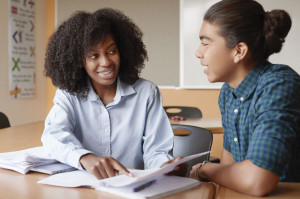
This October, California became the first state in the nation to require ethnic studies for high school graduation. Ethnic studies classes emerged about 50 years ago from the recognition that the contributions, struggles, and stories of people of color were marginalized or largely absent from American public school education. Today, these courses provide students an opportunity to learn about how diverse communities shaped the United States.
Findings from a study published this year in the Proceedings of the National Academy of Sciences provide another compelling reason to teach these types of classes: They help students succeed in school.
Over five years, students in San Francisco Unified School District whose eighth-grade GPAs were less than 2.0 were assigned to take an ethnic studies class in their first year of high school. Of the over 1,400 ninth graders in the district, 60% were Asian, 23% were Latino, and 6% were Black.
The course covered topics like “genocide of Native Americans in California, community resistance in Chinese and Latinx neighborhoods in California, and labor organizing during the Great Depression and World War II among African Americans and Filipino Americans.” It was designed to help students learn about and increase their capacity to counter racism and oppression, promote their commitment to social justice, and nurture pride in their communities.
The result? The students who took the ethnic studies class as freshmen had strong and lasting gains—they were more likely to come to school, pass more classes, graduate from high school, and enroll in college. The researchers don’t know exactly why, but the course may promote students’ sense of school belonging, affirm their sense of personal adequacy and self-worth, and support their identity development.
According to another study this year, learning to recognize racism and its impact may have yet another benefit for Black and Latino students: catalyzing their civic engagement. Young adults with a stronger “critical consciousness” are more likely to be involved in political campaigns, participate in social media discussions, and vote.
This research offers “credible evidence on the power of [an ethnic studies] course to change students’ life trajectories,” says coauthor Thomas S. Dee.
Happier countries consume in a more sustainable way

Could happiness make you complacent and less willing to address issues like climate change? A new study published in Social Indicators Research found the opposite: Happier countries tend to practice more sustainability.
Yomna Sameer of Abu Dhabi University and her colleagues looked at happiness scores for 152 countries, as well as how much these countries consumed, how much they were reaching sustainability goals, and how much they recycled.
After ruling out things that might affect their results—like a country’s wealth, governmental corruption, and general social trust—they found that happier countries met sustainability goals and recycled more than unhappier countries. This suggests that pursuing happiness doesn’t necessarily spell disaster for the environment.
On the other hand, the pursuit of gratitude may be even more effective at promoting sustainability, according to another study published this year in Emotion.
Shanyu Kates and David DeSteno of Northeastern University had participants write about a time they felt grateful, a time they felt happy, or a typical day in their lives. Then, participants played an economics game, where they had the opportunity to extract points from a collective bank, taking more for themselves and leaving less for others, if they wished. As the game progressed, the bank’s resources became smaller, mimicking real-life declining public resources and potentially encouraging players to hoard more to win.
But the participants who wrote about gratitude hoarded significantly less than those who wrote about happiness or a typical day, suggesting that practicing gratitude could promote the responsible use of shared resources—and thus, perhaps, greater sustainability.
Of course, being grateful can lead to happiness; so, it may be hard to separate out the effects of one versus the other. More broadly, both findings imply that we don’t have to sacrifice our personal well-being to create a better, more sustainable world for all.
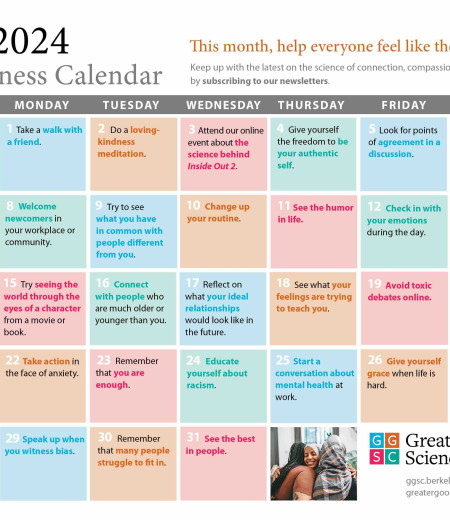








Comments